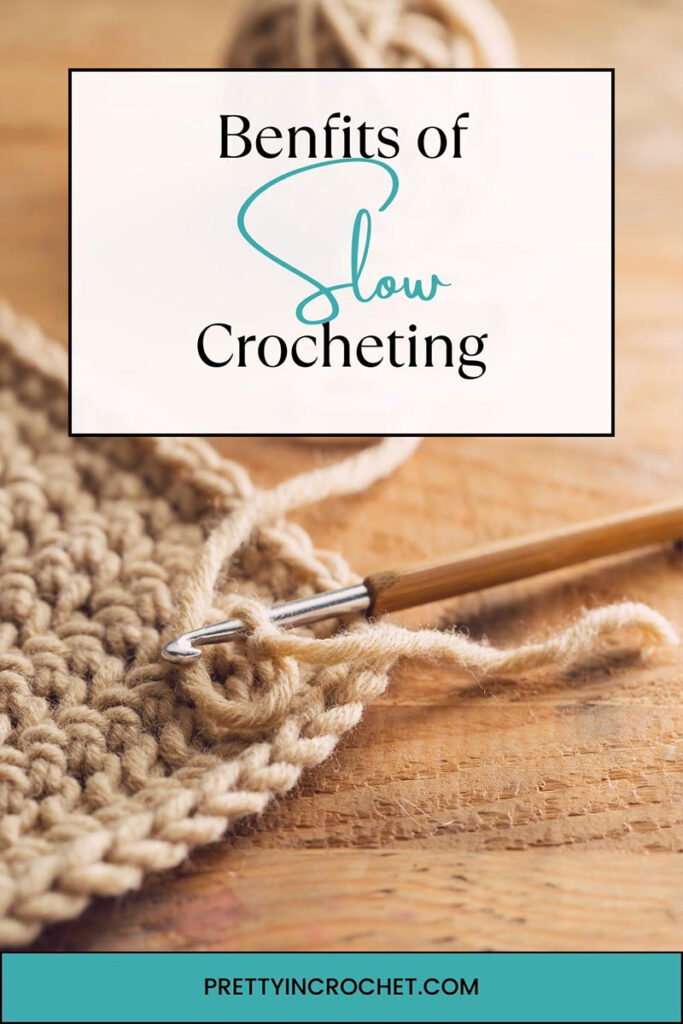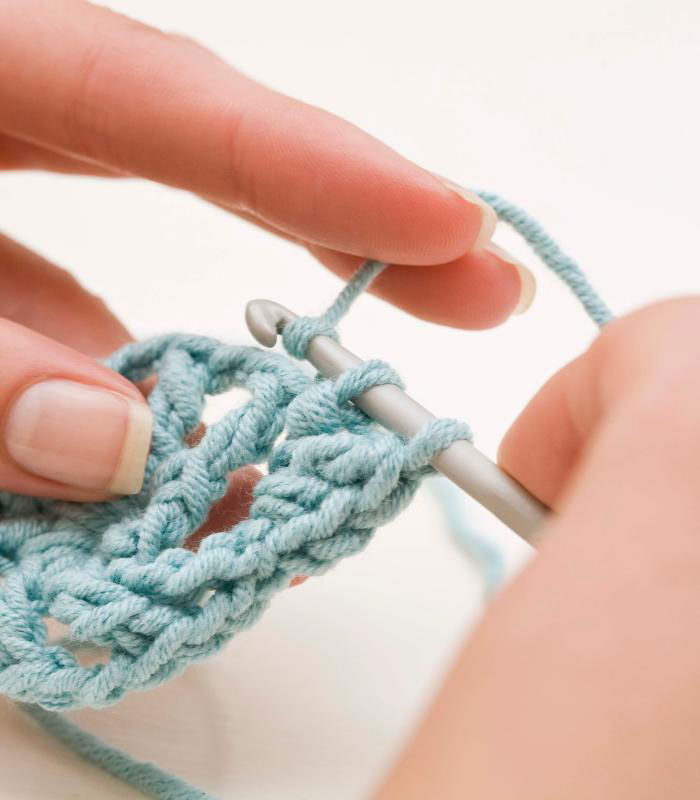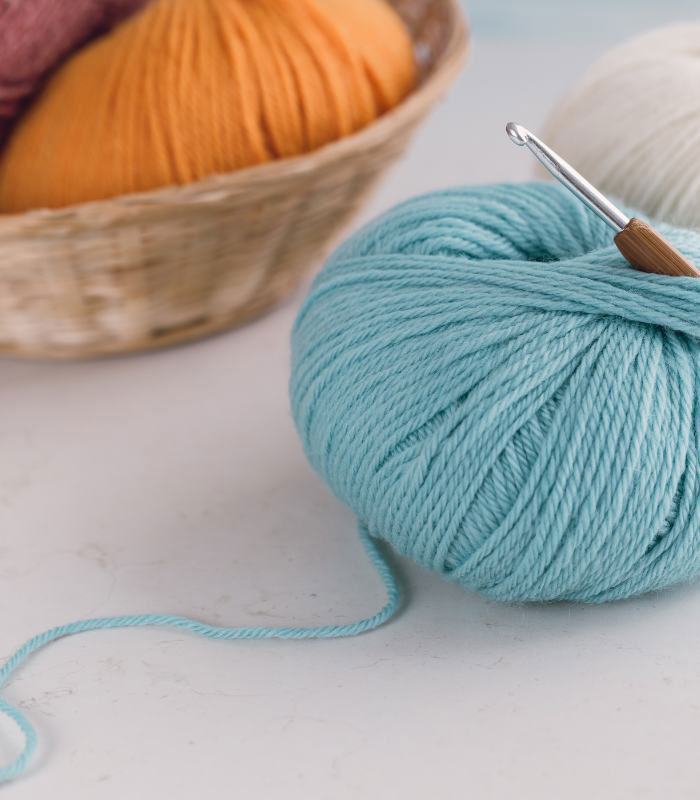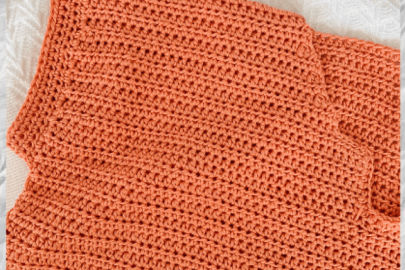In the past, I’ve written about how crochet is great self care. And crochet is a huge part of my self care and has been what has kept me anchored in times of crisis. As someone interested in self care and self love, it makes senses that slow making (as well as slow living) connected with me with as well. You’ll likely not have seen as much crochet content on my Instagram lately because I’ve been making more slowly.
As fibre arts makers, crocheters and knitters seem to have a few things in common as a whole: large yarn stashes, a huge pile of WIPs, and an urge to constantly be starting new projects.

Of course, new projects are exciting. Who doesn’t want to dive into a new skein of yarn and begin hooking up that foundation row? It’s the best feeling, as though you are giving birth to something no one else has ever made, and that’s because, no one has. You are its maker.
But with the large pile of WIPs, and the other pile of UFOs that you may or may not finish, comes a feeling of overwhelm, a feeling that you are being wasteful, a feeling that isn’t a good feeling at all. And suddenly, your craft and hobby is monster that causes you guilt and anxiety. Suddenly, you have a to do list and self imposed deadlines and rules around your knit and crochet. Things like de-stash goals, buy bans, and whatever else you can think of to make your craft more “manageable”, and make you feel more accomplished.
Beginning Slow Crochet
And I think all of that is okay…but that’s why early in 2024, I decided to begin slow making. I decided that I would do more large projects that were for me, completely selfish patterns that didn’t feed the Instagram algorithm. Not that I know what that algorithm wants to begin with. I decided to start a large blanket project, and I have made quite a lot of granny squares. I also decided to make a shrug, which I later had to frog, but both were simple and slow crochet projects. Ones that required very little attention to design detail or pattern repeats, and ones that were soothing and rewarding to make.

And I found that I liked the progress better. It allowed me to save brain power to learn to knit, and it felt as though I was working towards a goal without it being a deadline or turning into a failed make for some reason–such as the pattern not making a ton of sense or because the pattern was more complex than anticipated or because real life stuff happens that impacts the making. I have a ton of those in project bags already–mostly lace tees.
Slow Making Because I Have To
Another reason I’ve been embracing slow making is because I have developed pain in my wrists and forearms. I have been trying to crochet less, and switching up the projects to give my hands a break. So right now I’m working on learning to knit and a Tunisian crochet projects as both those crafts seem to cause less pain than crochet. Crochet movements are so complex that I feel the strain more after I’ve crocheted several rows.
It has been difficult to take breaks from crocheting (and knitting) because of this pain, which I am trying to address with my osteopath, but it has given me time to learn more about the yarn crafts. Slow making has also allowed me time to reflect on my making. And I am finding I quite enjoy having that reflection be a part of the process, as my making is starting to feel a little more organized and intentional than it sometimes otherwise did. I’ve also been reflecting on my designs and what kind of designs I want to be known for going forward.
Slow Making for Your Mental Health
Crochet is a huge part of my self care, and having to slow down did give me some anxiety. I wasn’t ready to put down my crochet hook. But I’ve found other ways to be immersed in my making–reading about knit and crochet, learning about different fibres and twists of yarn, online “window” shopping, and while all of that isn’t quite the same as actually crocheting, it’s led to more mindful making and choices and I have found that I’m really benefiting from that when it comes to my craft. I feel less anxious about my projects, less pressured and more at peace as I am making. Slow crochet has proved beneficial for me in many ways.

Rushing through life is stressful, so it makes sense that rushing through our making impacts the self care benefits of our craft. I love sharing crochet with everyone via my blog and other platforms, and I love trying to create new designs I think others will enjoy making and use, but I think I fell into the trap of thinking that I needed to be doing that all of the time and so began to rush my making. But slow making is changing my making and I think it’s changing it for the better, for myself, and for those who enjoy my crochet content.
Some benefits I think slow crocheting provides us are:
- allows for more mindful making, perhaps with larger projects
- allows for more eco conscious yarn choices
- can provide a greater sense of fulfillment, perhaps as you challenge your skills or tackle larger projects
- celebrating each moment as you knit or crochet, celebrating a completed piece that was a challenge piece for you as a maker
- reducing anxiety and stress around your making, reducing the pressured feeling of needing to rush
- increased productivity–possibly a greater amount of completed projects and less WIPs and UFOs
Final Thoughts
I do find that I am benefitting from slower crochet and making and I hope that later in the spring I’ll be able to share several finished projects on my Instagram but until then, you’ll likely be seeing a lot more of the same WIPs at various stages of completeness and I’m okay with that. Slow making is feeling really good right now and I want to lean into it. If you are feeling a bit rushed and overwhelmed by all your WIPs, I am giving you permission to give yourself permission to slow down. I think you’ll find yourself making more rather than less.
Be sure to subscribe to the newsletter for exclusive free patterns!


